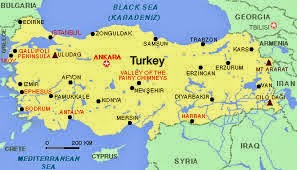Tahiti. The word evokes visions of an island paradise. With 118 islands boasting high, rugged mountain peaks, coral reefs, turquoise-blue lagoons, white sand, palm-fringed beaches, Tahiti might just be the most beautiful place in the world. Bora Bora, Moorea, Huahine, Taha'a, Raiatea, Manihi, Tikehau, Rangiroa, Fakarava, The Marquesas and the other exquisite Islands of Tahiti cover more than two million square miles of the South Pacific Ocean and is comprised of 118 islands and atolls spread over five great archipelagos.
Many islands are crowned with jagged peaks while others appear to barely float above the breaking waves. Spanning an area in the South Pacific as large as Western Europe, the total land mass of all the islands adds up to an area only slightly larger than the tiny state of Rhode Island.
The Tahitians of the modern era maintain their heritage and traditions of their Maohi ancestors. Oral history recounts the adventures of gods and warriors in colorful legends where javelin throwing was the sport of the gods, surf riding was favored by the kings, and Aito strongmen competed in outrigger canoe races and stone lifting as a show of pure strength.
The open-air sanctuaries called marae were once the center of power in ancient Polynesia. These large, stone structures, akin to temples, hosted the important events of the times including the worship of the gods, peace treaties, celebrations of war, and the launch of voyages to colonize distant lands.
In celebration of ancient traditions and competitions, the annual Heiva festival has been the most important event in Tahiti for the past 122 years. For visitors, there is no better place in the world to be during July than surrounded by this pure display of Polynesian festivity. Tahitians gather in Papeete from many slands to display their crafts, compete in ancient sporting events, and recreate traditional and elaborate dance performances.
The word tattoo originated in Tahiti. The legend of Tohu, the god of tattoo, describes painting all the oceans’ fish in beautiful colors and patterns. In Polynesian culture, tattoos have long been considered signs of beauty, and in earlier times were ceremoniously applied when reaching adolescence.

The beauty, drama, and power of today’s Tahitian dance testify to its resilience in Polynesian culture. In ancient times, dances were directly linked with all aspects of life. One would dance for joy, to welcome a visitor, to pray to a god, to challenge an enemy, and to seduce a mate. Dance is still accompanied by traditional musical instruments uch as thunderous drums, conch shells, and harmonic nasal flutes. Modern Tahitian music is enjoyable as well, with a sound that often blends Polynesian rhythm and Western melody.

The skills of the ancestors’ artistry are kept sacred and passed on by both the “mamas,” the guardians of tradition and the matriarchs of Tahitian society as well as by skilled craftsmen. Items include weaving, quilting, wooden sculptures and bowls, drums, tapa, carvings, and hand-dyed pareu. Centuries before the Europeans concluded that the earth was round, the great voyagers of Polynesia had already mastered the Pacific Ocean.Aboard massive, double-hulled outrigger canoes called tipairua,they navigated by stars and winds. Today, the canoe still plays a role in everyday Tahitian life and is honored in colorful races and festivals throughout the islands.

Tropical flowers seem to be everywhere on the islands, particularly in the hair of Tahitians. Hibiscus blossoms are worn behind the ear or braided with palm fronds into floral crowns. The Tiare Tahiti flower is used in leis for greeting arriving visitors and returning family. Tradition holds that, if taken, women and men wear a flower behind their left ear.
Around 4000 BC, a great migration began from Southeast Asia across open ocean to settle the Pacific Islands. Many researchers conclude that Tonga and Samoa were settled around 1300 BC and from here colonization voyages were launched to the Marquesas Islands in about 200 BC. Over the next several centuries, great migrations to colonize all the Tahitian islands and virtually the entire South Pacific took place.
This area of the Pacific ocean is now called the “Polynesian Triangle” and includes Hawaii to the north, Easter Island to the southeast,and New Zealand to the southwest. As a result of these migrations, the native Hawaiians and the Maoris of New Zealand all originate from common ancestors and speak a similar language collectively known as Maohi.

This week we decided to cook two traditional Tahitian Dishes. As an appetizer we cooked the National Dish of Tahiti, Poisson Cru. This is a Tahitian Ceviche that consists of Raw Ahi Tuna that has been cured in Lime Juice and Coconut Milk, and served very cold with Cucumbers, tomatoes, and onions. For our main entrée, we cooked Chevrettes a la Vanille et Coco(Tahitian Shrimp Cooked in Coconut and Vanilla Sauce). The Poisson Cru was very fresh and light. The Tuna was delicate and the lime provided a lovely sourness to the dish which balanced out the creaminess of the coconut milk. The Shrimp in Coconut and Vanilla was unlike anything I have ever tasted. It was sweet and silky at the same time. Apparently Tahiti is home to the very best vanilla in the world, so I can see why this dish is enjoyed so much. We served the shrimp over jasmine rice. It was lovely!!
Here are the recipes we used this week:























































